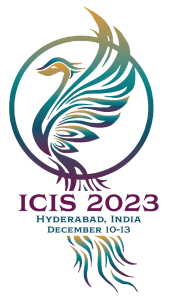Paper Number
1405
Paper Type
Completed
Description
With urban problems intensifying, Smart City solutions are recognized by researchers and practitioners as one of the most promising solutions to make urban areas economically, environmentally, and socially sustainable. While many elements of Smart City solutions have been explored, existing works either treat Smart City solutions as technical black boxes or focus exclusively on Smart City solutions’ technical or non-technical characteristics. Therefore, to conceptualize the unique characteristics of Smart City solutions currently available, we developed a multi-layer taxonomy based on Smart City solution literature and a sample of 106 Smart City solutions. Moreover, we identified three clusters, each covering a typical combination of characteristics of Smart City solutions. We evaluated our findings by applying the Q-sort method. The results contribute to the descriptive knowledge of Smart City solutions as a first step for a theory for analyzing and enable researchers and practitioners to understand Smart City solutions more holistically.
Recommended Citation
Jonas, Claudius; Schmitt, Kevin; Oberländer, Anna Maria; and Ebel, Philipp, "Illuminating Smart City Solutions – A Taxonomy and Clusters" (2023). ICIS 2023 Proceedings. 1.
https://aisel.aisnet.org/icis2023/iot_smartcity/iot_smartcity/1
Illuminating Smart City Solutions – A Taxonomy and Clusters
With urban problems intensifying, Smart City solutions are recognized by researchers and practitioners as one of the most promising solutions to make urban areas economically, environmentally, and socially sustainable. While many elements of Smart City solutions have been explored, existing works either treat Smart City solutions as technical black boxes or focus exclusively on Smart City solutions’ technical or non-technical characteristics. Therefore, to conceptualize the unique characteristics of Smart City solutions currently available, we developed a multi-layer taxonomy based on Smart City solution literature and a sample of 106 Smart City solutions. Moreover, we identified three clusters, each covering a typical combination of characteristics of Smart City solutions. We evaluated our findings by applying the Q-sort method. The results contribute to the descriptive knowledge of Smart City solutions as a first step for a theory for analyzing and enable researchers and practitioners to understand Smart City solutions more holistically.
When commenting on articles, please be friendly, welcoming, respectful and abide by the AIS eLibrary Discussion Thread Code of Conduct posted here.



Comments
17-IOT